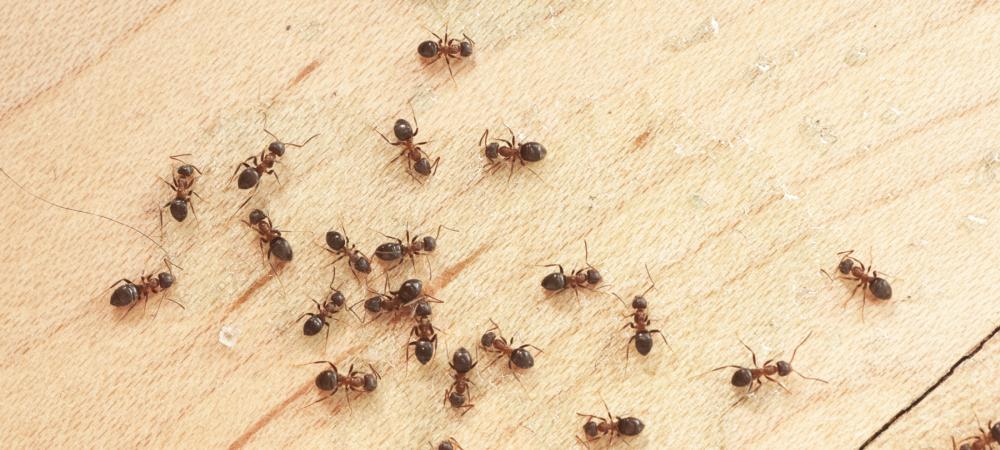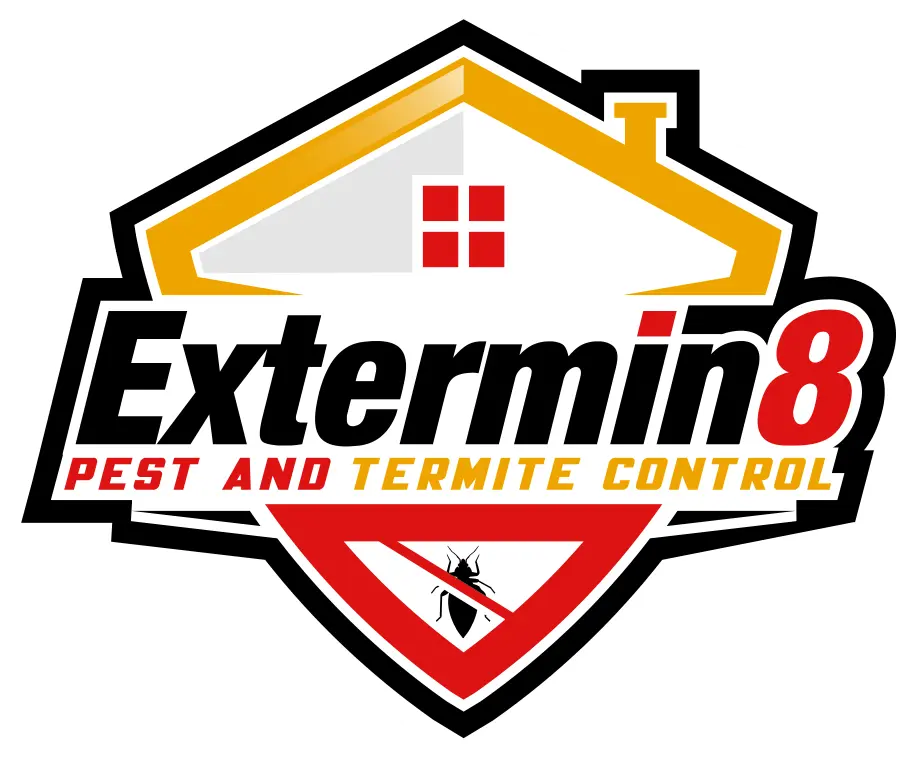Ants in the Kitchen? Here's Why They Keep Coming Back

If you’re a homeowner in the Coachella Valley, chances are you’ve battled with ants in your kitchen at some point—maybe even this week. One day your countertops are clean, and the next, there’s a determined trail of tiny intruders marching straight to your fruit bowl. So why do ants keep coming back, no matter how clean you keep your kitchen?
Let’s break down what’s really going on—and what you can do about it in our unique desert climate.
1. The Desert Heat Drives Ants Indoors
In the Coachella Valley, where daytime highs routinely soar into the triple digits from late spring through early fall, ants are under extreme pressure to survive. Their outdoor environment becomes dangerously dry and hot, making it difficult to find moisture and food. Ants are cold-blooded insects, which means they can’t regulate their internal body temperature. When the ground heats up, especially in direct sunlight, they retreat underground or—worse—head indoors.
Your kitchen offers the perfect alternative: it's cool, shady, and filled with moisture sources (like your sink, dishwasher, or pet bowls). Even the smallest amounts of water can attract them when they’re struggling to survive outdoors.
What You Can Do:
Seal Entry Points:
- Check window sills, door frames, baseboards, under sinks, and around plumbing for cracks or gaps.
- Use clear silicone caulk or foam sealant to seal holes. Weatherstripping kits from Home Depot or Lowe’s work great for doors.
Check out 9 steps to seal your home against pests.
Fix Moisture Sources:
- Fix leaky faucets and inspect under sinks and around your dishwasher for even small leaks.
- Avoid leaving wet sponges or towels out.
- Use a dehumidifier or improve ventilation under the sink if it’s constantly damp.
- Wipe down wet surfaces like the sink basin and dish rack each night. Run the garbage disposal regularly and rinse the sink well—ants love damp food bits.
Rethink Pet Areas:
- Use elevated feeding trays and water bowls for dogs and cats.
- Wipe around pet bowls after each feeding, and avoid leaving food out overnight.
2. Scent Trails Are Like Freeway Signs for Ants
Ants are master communicators. When a scout ant finds food, it returns to the colony while laying down a pheromone trail—a chemical breadcrumb path that tells the others exactly how to find it. This is why a single ant on your counter can lead to a full-blown parade in just a few hours.
These scent trails are incredibly persistent. Even after you clean, the chemical signal can remain strong enough to bring ants back to the same area.
What You Can Do:
Disrupt the Scent Trails:
- Mix equal parts white vinegar and water in a spray bottle. Wipe down countertops, baseboards, and entry points daily. You can also use it on floors, especially along baseboards or in corners where ants have traveled.
- Citrus peels or a few drops of essential oils like peppermint, tea tree, or lemon can be added to your cleaning solution for added deterrent power.
Deep Clean:
- Empty trash cans frequently, especially during summer, and clean them out thoroughly.
- Sweeping often pushes crumbs into corners. Use a vacuum to fully remove debris, especially in tight areas like under the oven or fridge.
- Pull out the toaster and microwave weekly. Wipe underneath and around them.
- Check the floors under appliances and along the edges of cabinets where crumbs hide.
Secure All Food Items:
- Invest in stackable, airtight containers for dry goods like sugar, cereal, pasta, rice, and flour. Ants can chew through thin plastic or cardboard packaging.
- Even unopened items can attract ants if sugar or flour dust is left on the exterior. Wipe down new groceries before storing.
- Store fruit in the fridge during peak ant season (typically March through October here).
3. Coachella Valley’s Unique Landscaping Plays a Role
Many homes in the Coachella Valley use xeriscaping or desert-friendly landscaping to conserve water—think rocks, gravel, mulch, and drought-tolerant plants. While environmentally smart, these designs create perfect hiding spots for ant colonies. Loose rocks and mulch trap heat and moisture below the surface, making them ideal nesting sites.
What’s worse: when landscaping materials come right up to your home’s foundation, ants only have a short distance to travel indoors.
What You Can Do:
Create a Buffer Zone:
- Keep at least 12-18 inches of bare space between your home’s foundation and any mulch, rocks, or plants. This makes it harder for ants to cross into your house undetected.
- Use crushed granite, dry sand, or diatomaceous earth to form a “dry moat” around the home, which helps dry out and repel ants.
Trim Greenery Back:
- Ants use plants as natural bridges. Trim back trees, shrubs, and vines so nothing touches your roofline or walls.
- Avoid planting shrubs too close to your home’s exterior walls. Keep all landscaping at least 18 inches away from exterior walls.
Use Natural Ant Barriers:
- Sprinkle diatomaceous earth, cinnamon, or food-grade boric acid along the foundation and any known entry points. Safe for pets and kids but deadly to ants.
- Reapply after heavy wind or irrigation.
4. Rainy Days? Ants Seek Shelter
Although the Coachella Valley averages only 3–6 inches of rain per year, even a brief downpour can flood outdoor ant nests—especially during the monsoon season (typically July to September). This sudden saturation forces ants to seek dry shelter fast, and your kitchen is an obvious target.
Even light irrigation from your sprinkler system or drip line can occasionally displace a colony, especially if their nest is shallow.
What You Can Do:
Inspect the Perimeter After Rain:
- Walk your home’s perimeter after a storm to check for new ant trails or mud tubes.
- Check for foundation cracks or gaps in doors and windows after a storm.
Check for Weather Damage:
- Ensure windows are sealed tight and door sweeps are intact. Replace old or cracked weather stripping, window caulking, or door sweeps.
Reapply Outdoor Treatments:
- If you use granular bait, a perimeter spray, or any natural barriers, rain may wash it away. Reapply products once things dry out.
- Wait until the surfaces dry, then reapply according to label directions.
5. Over-the-Counter Ant Sprays Only Mask the Problem
Most over-the-counter ant sprays only kill the ants you see. They don’t reach the queen, and worse, some sprays cause the colony to "bud"—a survival tactic where the colony splits in two and relocates, spreading the infestation. Plus, many sprays leave behind residues that repel ants temporarily but don’t remove the root cause.
What You Can Do:
Use Bait, Not Spray:
- Use ant baits, not sprays. Ant baits (like Terro, Advion, or Combat) contain slow-acting poison that worker ants carry back to the colony.
- Place them along ant trails, near baseboards, behind trash bins, under skins, or where you’ve seen activity.
Be Patient:
- It may take 3–7 days to see results as the bait works its way through the colony.
- If ants continue to ignore the bait, switch brands or bait types. Different species have different preferences (sugar vs. protein-based baits).
- Resist the urge to kill every ant you see during this time—they’re helping to deliver the poison.
Call in Local Pros:
- If the problem keeps coming back, contact a local pest control service like Extermin8 Pest and Termite Control. Our ant exterminators are familiar with desert pests like Argentine ants, Southern fire ants, and odorous house ants, which are common in the valley.
Final Tip: Don’t Wait Until It's an Infestation
In Coachella Valley, ants are a year-round nuisance, but especially active from spring through fall. Staying proactive is key. Routine checks, smart landscaping, and a clean kitchen can go a long way.
Need a local recommendation for ant control? Contact our team today! Our team of exterminators in the Valley specializes in desert pests and understands our unique challenges.
